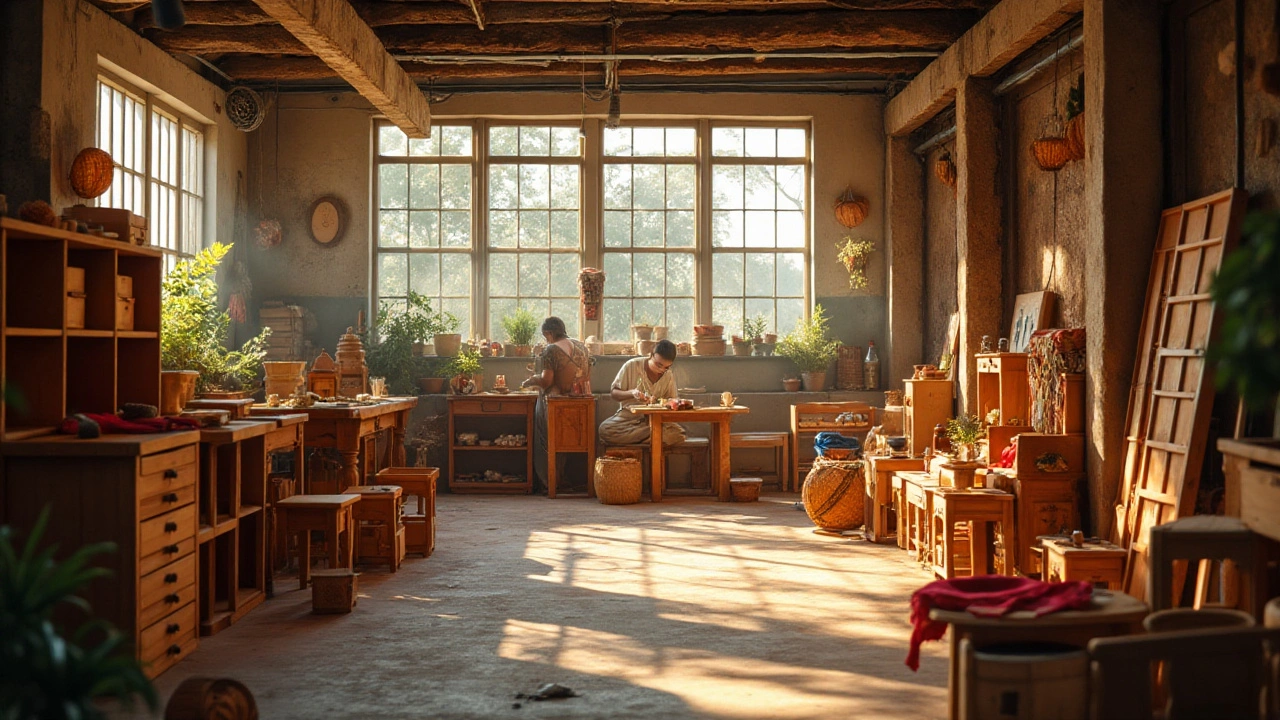- Most Reliable Cars in Asia: Top Picks & Insider Insights Jul 27, 2025
- Who Bought Toyota to India? The Real Story Behind Toyota’s Entry into the Indian Market Nov 20, 2025
- What Is India's New Textile Policy? Key Changes and How It Affects Manufacturers Nov 18, 2025
- Who Still Dumps Garbage in the Ocean: The Role of Plastic Manufacturers Apr 3, 2025
- Most Popular Small Business in Manufacturing: What's Leading the Pack? Mar 16, 2025
Home Furniture Market 2025: Trends, Costs & Opportunities
India’s home furniture scene is buzzing. More people are moving to cities, incomes are rising, and shoppers are switching from cheap imports to locally made pieces. That mix is pushing the market to grow faster than most expected. If you’re a buyer hunting for deals or a maker looking to expand, this guide gives you the basics you need right now.
Key Growth Drivers in the Indian Home Furniture Market
First up, urbanisation. Cities like Delhi, Mumbai and Bengaluru are adding millions of homes every year, and each new house needs a bed, a table, a sofa. Second, e‑commerce platforms have made it easy to compare styles and prices online, so consumers are buying more frequently and trying out new designs. Third, a growing focus on sustainability is nudging shoppers toward eco‑friendly wood, recycled metal, and low‑VOC finishes. Finally, government schemes that support small manufacturers are lowering the entry barrier for local producers.
All these factors combine to create a market that’s both big and still has room for new players. If you can offer quality, decent price and a story – like using reclaimed wood or supporting local artisans – you’ll stand out.
Import Costs and How to Keep Them Low
Importing furniture from abroad can still be attractive, but the costs add up fast. Shipping fees, customs duties, GST and handling charges can turn a $200 chair into a $350 expense. To keep the bill down, start by consolidating orders – a full container load costs less per piece than multiple small shipments. Second, choose ports with faster clearance; Mumbai and Chennai usually have smoother processes than smaller ports. Third, work with a freight forwarder who knows how to classify items correctly – a tiny mis‑code can add a huge duty.
Another tip is to negotiate payment terms that let you hold back a portion of the money until the cargo clears. This gives you leverage if anything goes wrong during transit. And finally, look for Indian manufacturers that can replicate popular overseas designs; you get the style without the import tax.By understanding where the money drains, you can plan a budget that leaves room for marketing or design upgrades instead of surprise fees.
Beyond costs, keep an eye on quality. Cheap imports often cut corners on durability, which leads to returns and bad reviews. A slightly higher upfront cost for a well‑built piece usually pays off in customer satisfaction.
In short, the home furniture market is expanding because more people want comfortable, stylish homes. Urban growth, online shopping, sustainability trends and supportive policies are the main drivers. Importing remains viable if you manage shipping, duties and quality carefully. Whether you’re buying or making, focusing on clear costs and real value will help you succeed in this fast‑moving space.
India's Furniture Manufacturing Industry Set for Growth
- Aarav Sekhar
- Dec 10, 2024
As India undergoes rapid urbanization and an expanding middle class, the furniture manufacturing industry is poised for significant growth. The rise in real estate development and home décor interest fuels demand for diverse furniture products. This sector's success is supported by a skilled labor force, innovative design approaches, and robust supply chain capabilities. With the push towards sustainable practices, Indian manufacturers are increasingly focusing on eco-friendly materials and processes. The Indian furniture market offers both domestic and global companies opportunities for substantial expansion in the coming years.
